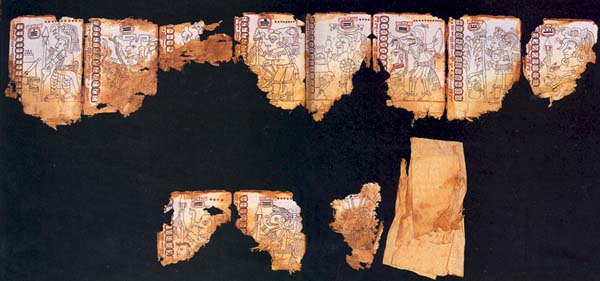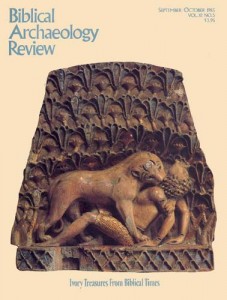Codices—The Historical and Religious Records of the Ancient Mesoamericans
Sidebar to: Lord Kingsborough Lost His Fortune Trying to Prove the Maya Were Descendants of the Ten Lost Tribes

Some Mesoamerican civilizations recorded their history and beliefs in pictorial images and hieroglyphic writing on strips of pounded fig bark or on deerskin. Before being painted with natural pigments, the long strips of bark or deerskin were laid out and coated with a fine white stucco. Color was applied, and then the sections were folded, fan-fashion, like the facsimile of the Féjérvary Mayer Codex (above).
Only four Mayan codices survived the Spanish conquest. Three of them are now in libraries in Dresden, Madrid and Paris. The fourth codex, written by the Toltec-Maya Indians, is now called the Grolier Codex because it was first exhibited in 1971 at the Grolier Club in New York. This codex belonged to a private collector in Mexico and apparently was found in a wooden box in a cave near Tortuguero, Chiapas, sometime within the past 20 years.

The Grolier codex (array of pages, above) describes the various cycles of the planet Venus and rituals associated with these cycles.
Already a library member? Log in here.
Institution user? Log in with your IP address.

